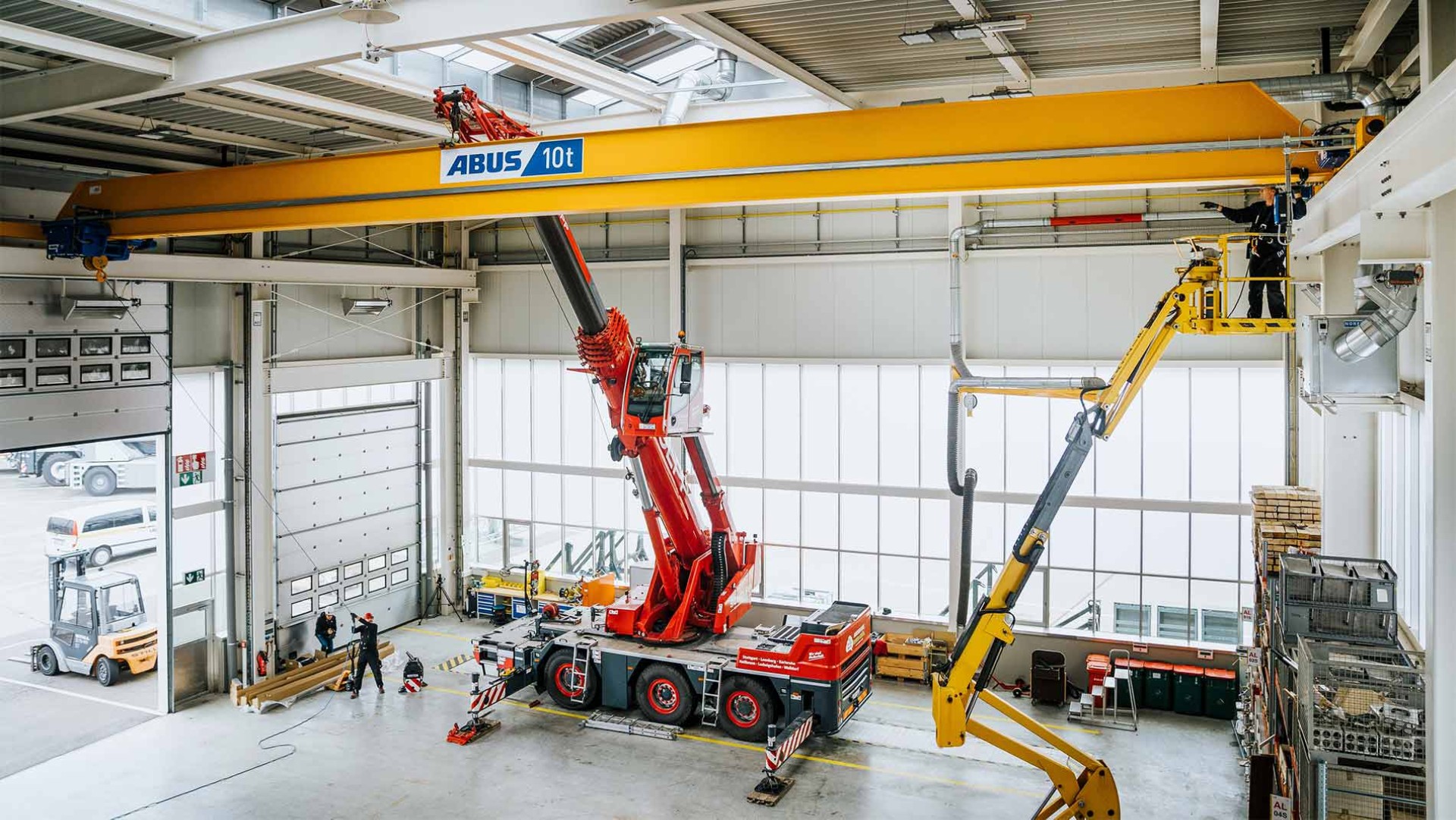
6 minutes - magazine 01 | 2023
Back to the roots
Returning to the place of your birth after many years can be rather emotional.
The jib must be brilliant
The LTC 1050-3.1, which was summoned into the ever expanding Liebherr plant in Ehingen, its birthplace, in mid-October to install overhead cranes, was singularly unimpressed by the experience, however.
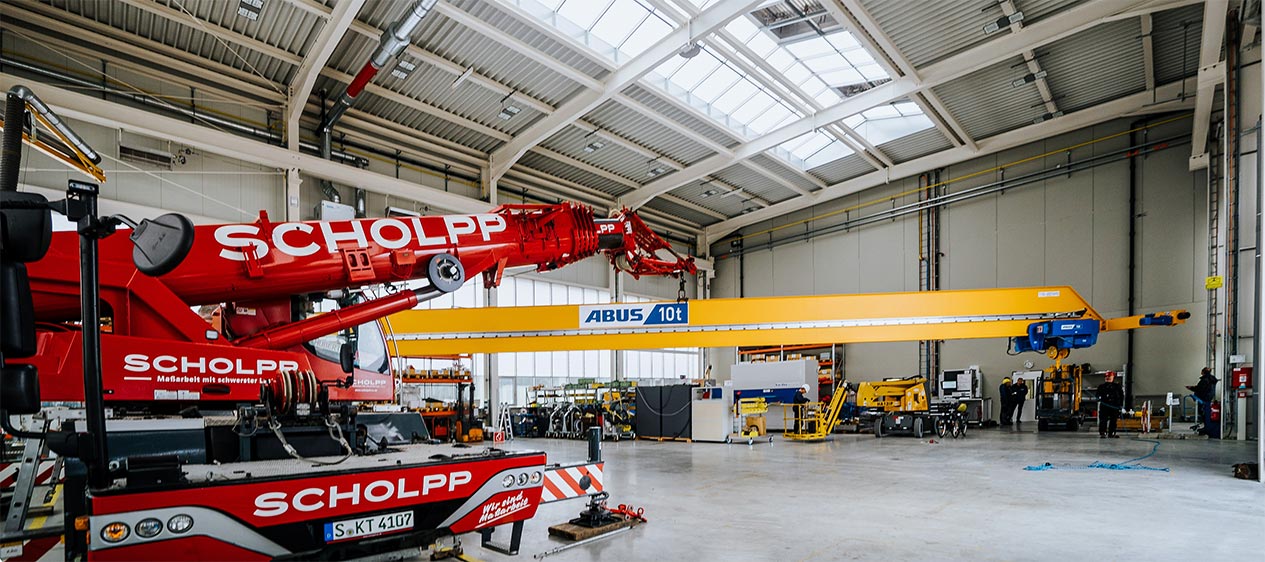
When every centimetre counts - The hook traverse is installed instead of the set of sheaves and the hook block

Stephan Burkhardt - Operations Manager, SCHOLPP Kran & Transport GmbH
It very calmly drove through the plant gate, past the shipment assembly area, where it had been given its white Scholpp signwriting and along the painting shed where it had been given its red colour. It then continued past the shed in which it had been assembled using around 20,000 individual parts two years previously. The compact special crane did not even hesitate when it drove over the crane acceptance area where it had had to hoist a load 25 percent above its specified maximum. But this was precisely its destination and the reason it had come to the plant – the installation of a 20 metre overhead crane in the workshop area of a newly erected building for superstructure testing specialists.
Liebherr always listens to suggestions from those working in the industry.
Things became significantly more emotional when Stephan Burkhardt, Operations Manager at crane and transport contractor Scholpp, who has been in the business for 30 years, met the installation team for Abus overhead cranes at the same location, as they had known each other and been friends for many years. The two companies have a skeleton contract for installation work in BadenWürttemberg. Christian Heese, who in the past 27 years has installed around 6,000 overhead cranes for Abus and is now primarily focused on training the younger generation, was also there.
Closer to the roof with a hook traverse
We were looking forward to talking to these two old hands in the crane and installation industries about the special challenges presented by the installation of overhead cranes. There was one point that they particularly agreed about: The jib must be brilliant! Christian Heese explains: “There is generally very little space between the installation position of the overhead crane and the roof. So every centimetre of hoisting height counts. We always use a heavy duty jib for these installation jobs.”
Stephan Burkhardt continues: “The new assembly jib for the LTC 1050-3.1 has been significantly improved for overhead crane installation work. We are delighted that Liebherr has taken our ideas on board. The jib can be affixed quickly and is very flexible as a hook traverse can be installed rather than a set of sheaves so that the load can be hoisted further towards the roof.”
Crane operator René Reinsdorf did actually use this version for the job in the new shed for the Liebherr crane acceptance procedure: “The hook traverse enables me to reach maximum height.” The six tonne single girder overhead travelling crane was then installed smoothly. “The LTC 1050-3.1 is designed for much greater loads and the hook traverse can manage 25 tonnes”, explains Reinsdorf.
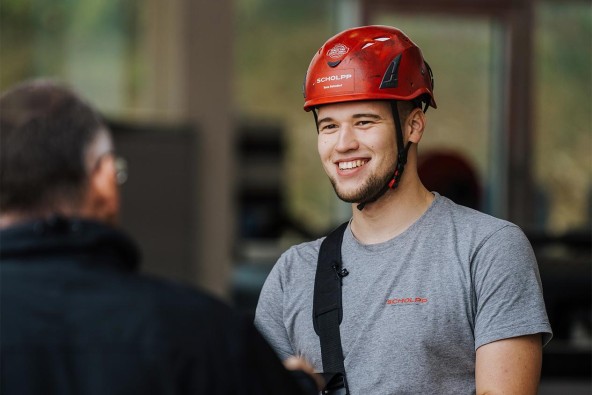
René Reinsdorf - Crane Operator at SCHOLPP Kran & Transport GmbH
Sliding high loads
Another major requirement for a crane for working in sheds is that it can handle high telescoping lifting capacities as the boom must slide the load to the installation position. Scholpp’s LTC 1050-3.1 has a 6-piece 36 metre boom with the TELEMATIK telescoping system, which delivers high telescoping lifting capacity. However, Christian Heese actually prefers booms with the rope pull mechanism: “I simply find telescoping faster with them. You feel the benefit if you have to complete lots of hoists one after the other”.
You can easily switch from one Liebherr crane to another.
“The telescoping speed is not massively important for installing individual overhead cranes. We find the long boom more important”, counters Stephan Burkhardt. As both pinned booms and booms with the rope pull mechanism have their own benefits, Liebherr can now supply the LTC 1050-3.1 with both systems. However, rope pull booms are limited to four telescopic sections. That is why this version of the LTC 1050-3.1 has a 31 metre telescopic boom, five metres less than the pinned TELEMATIK version. High telescoping lifting capacities can also be achieved by the rope pull boom.
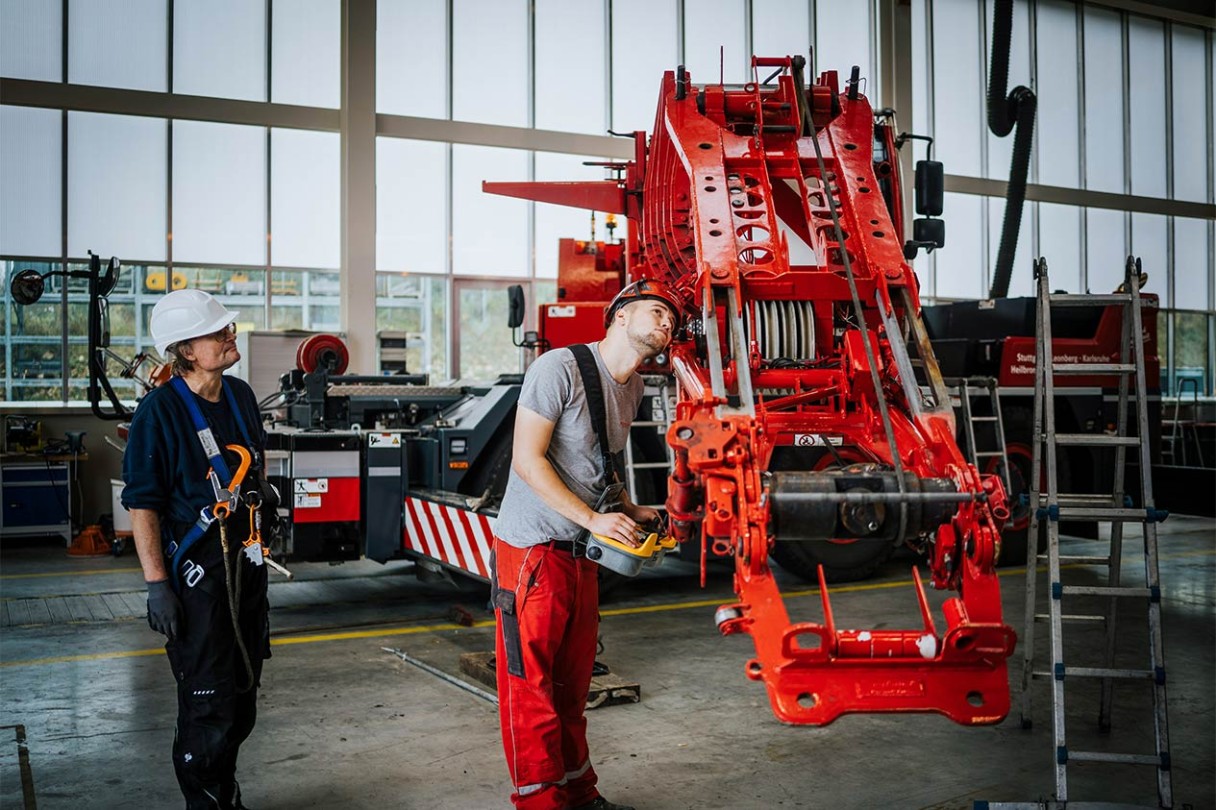
Convenient - The remote control makes assembly and set-up work easier.
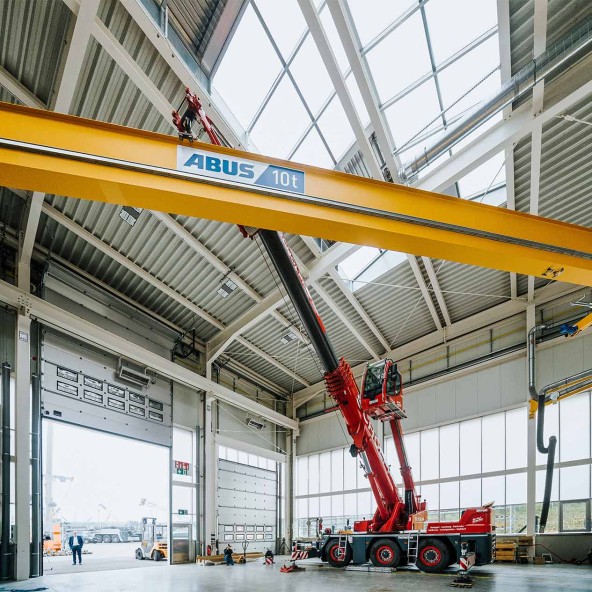
At eye level - The elevating cab on the LTC 1050-3.1 provides a full view of the installation site.
Good view
René Reinsdorf is in his early 20s and completed his 3-year apprenticeship at Scholpp. “I normally operate a different Liebherr crane, but switching to the LTC is straightforward because the controls on all Liebherr cranes are similar.” He is particularly enthusiastic about the elevating cab on the compact 50 tonne crane. “It gets me to a height of around eight metres. Obviously from there I have a much better view of the installation situation.”
“The elevating cab is fantastic”, confirms Stephan Burkhardt. “As is the remote control. Scholpp buys all its cranes with remote control. We also ordered RemoteDrive for the LTC, however. It enables the crane chassis to be controlled externally and the operator can position himself anywhere that provides the best view of any problem areas.”
This article was published in the UpLoad magazine 01 | 2023.



